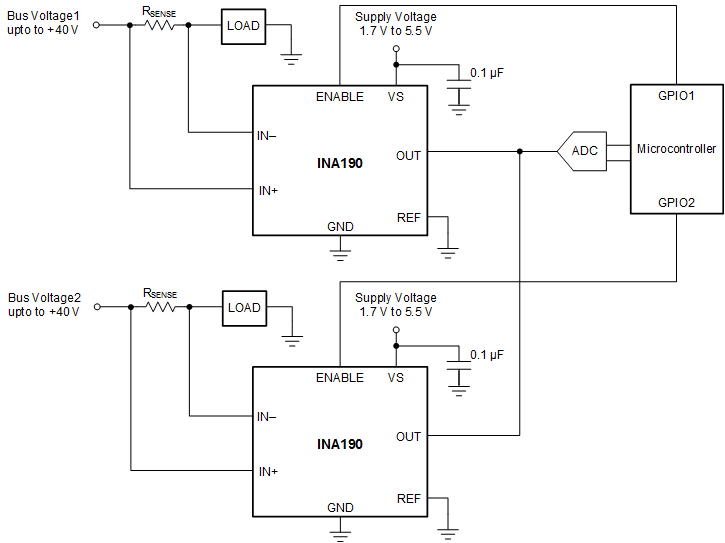SBOS863D March 2018 – November 2019 INA190
PRODUCTION DATA.
- 1 Features
- 2 Applications
- 3 Description
- 4 Revision History
- 5 Pin Configuration and Functions
- 6 Specifications
- 7 Detailed Description
- 8 Application and Implementation
- 9 Power Supply Recommendations
- 10Layout
- 11Device and Documentation Support
- 12Mechanical, Packaging, and Orderable Information
Package Options
Mechanical Data (Package|Pins)
Thermal pad, mechanical data (Package|Pins)
- DCK|6
Orderable Information
7.4.5 Shutdown
The INA190 features an active-high ENABLE pin that shuts down the device when pulled to ground. When the device is shut down, the quiescent current is reduced to 10 nA (typ), and the output goes to a high-impedance state. In a battery-powered application, the low quiescent current extends the battery lifetime when the current measurement is not needed. When the ENABLE pin is driven to the supply voltage, the device turns back on. The typical output settling time when enabled is 130 µs.
The output of the INA190 goes to a high-impedance state when disabled. Therefore, you can connect multiple outputs of the INA190 together to a single ADC or measurement device, as shown in Figure 38.
When connected in this way, enable only one INA190 at a time, and make sure all devices have the same supply voltage.
 Figure 38. Multiplexing Multiple Devices With the ENABLE Pin
Figure 38. Multiplexing Multiple Devices With the ENABLE Pin